How Can I Replace a Missing Tooth?
So, you’re missing a tooth. Who knows how it happened. It came out on its own. You had it removed because you were experiencing pain or sensitivity. You got into a fight with your younger brother, who used to be small, and is now bigger than you. All that’s in the past, we can’t change it. The question is, what next?
There are three main options to consider. Each of these options can vary in your personal treatment plan, depending on your health. For example, we will talk about replacing a single tooth with a dental implant here. For your case, you may be looking at replacing multiple missing teeth, and your range of options will be a bit wider. This article will at least give you a brief introduction to the types of treatments available.
At Longworth, we believe in giving you all your treatment options before partnering with you on your preferred treatment. With that in mind, let’s start with Option 0: Doing Nothing. I am a big fan of option zero: leave everything just the way it is. It’s important to remember that option zero is always the base, default option. And it is usually good for some time. The advantage to Option 0 is that it is the cheapest option for right now. The immediate cost is 0. It doesn’t take any time or energy. Option 0 also has some disadvantages. The cost for treatment down the road could go up if your health deteriorates. And if you aren’t currently satisfied with how you bite, chew or smile, that likely won’t improve without treatment.
Option 1: Placing an Implant-Supported Crown
In this case, the dental implant acts as an artificial “root” for the tooth, anchoring the replacement tooth in place. Here is the process.
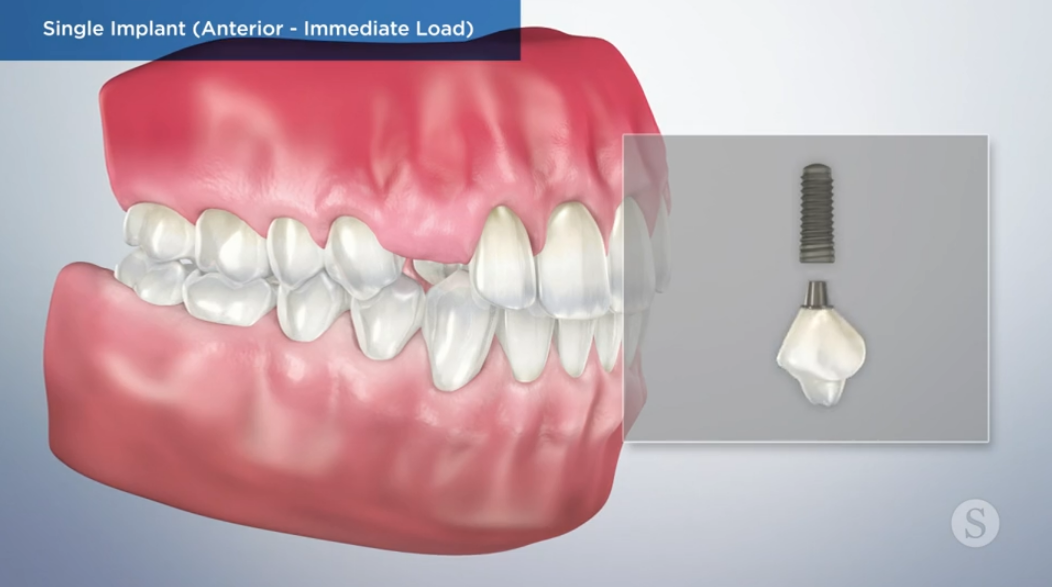
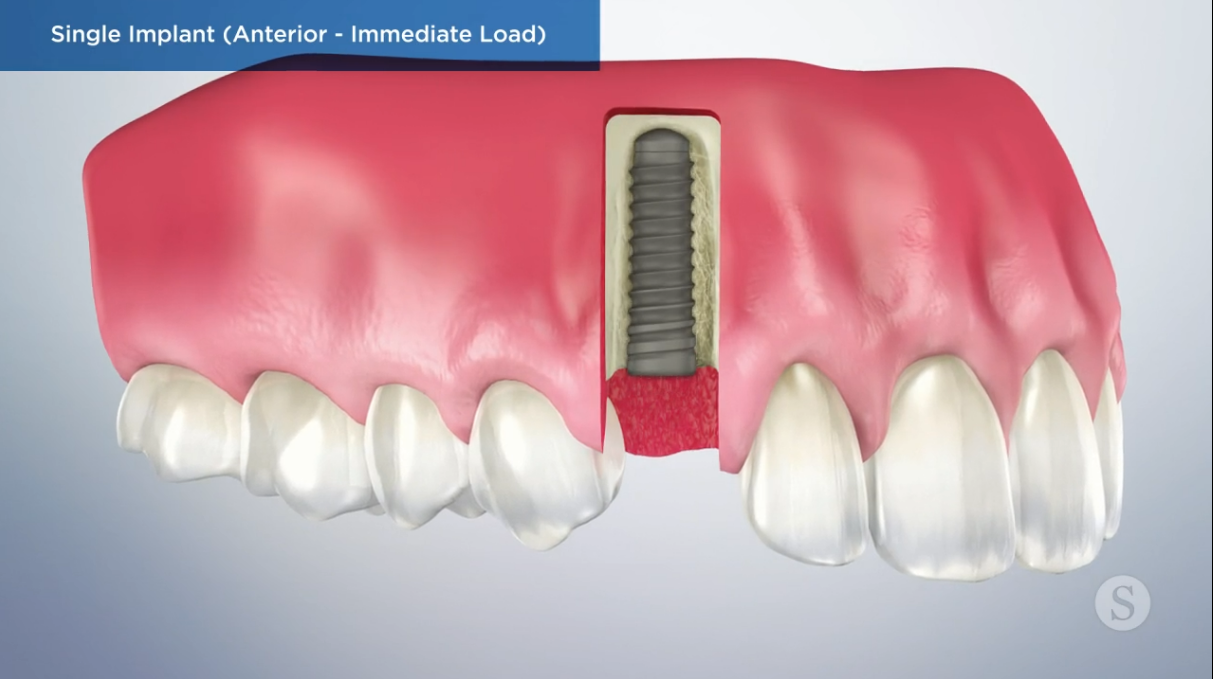
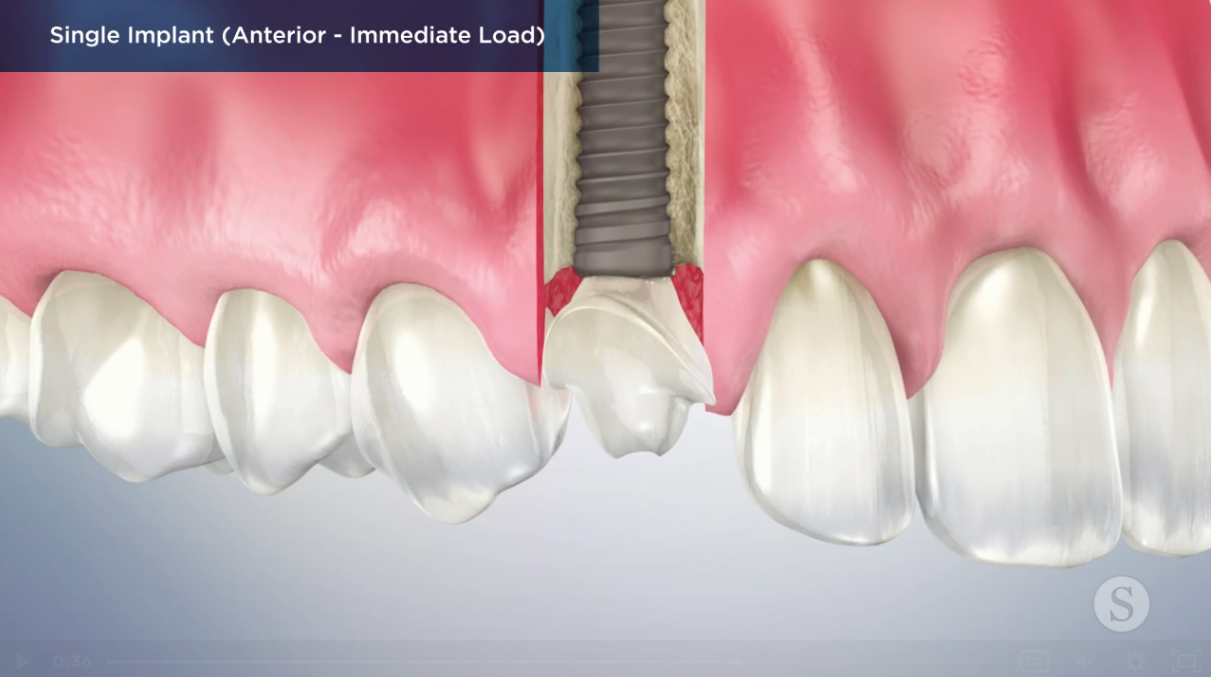
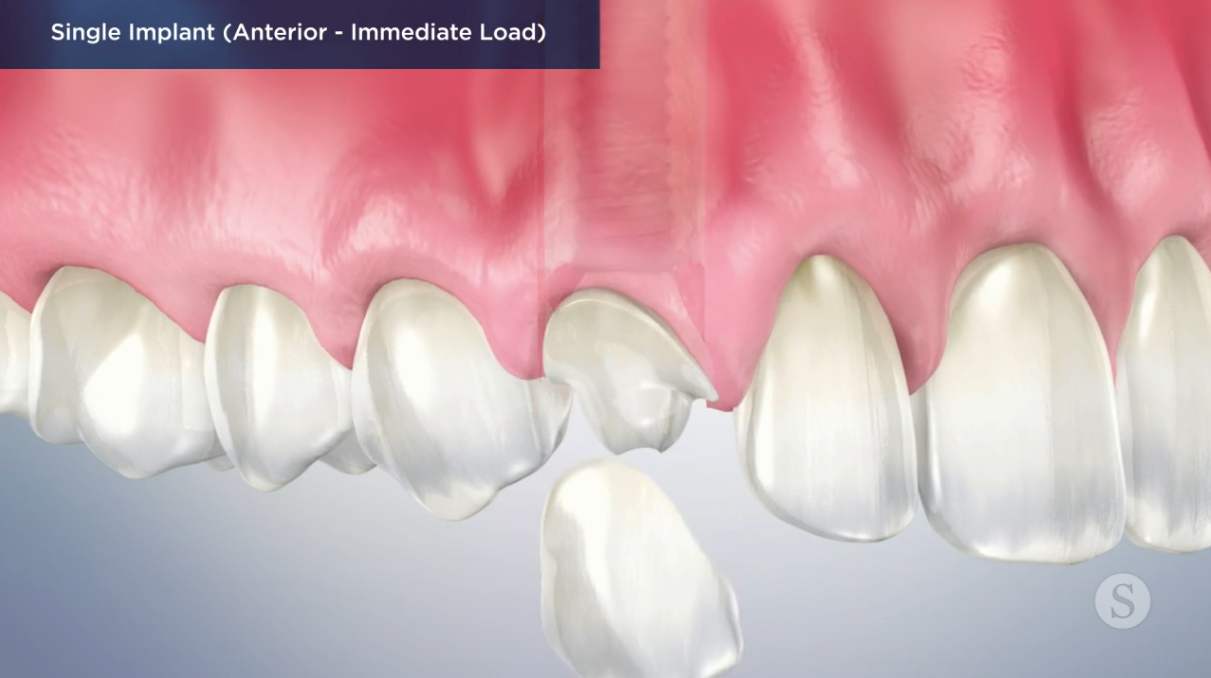
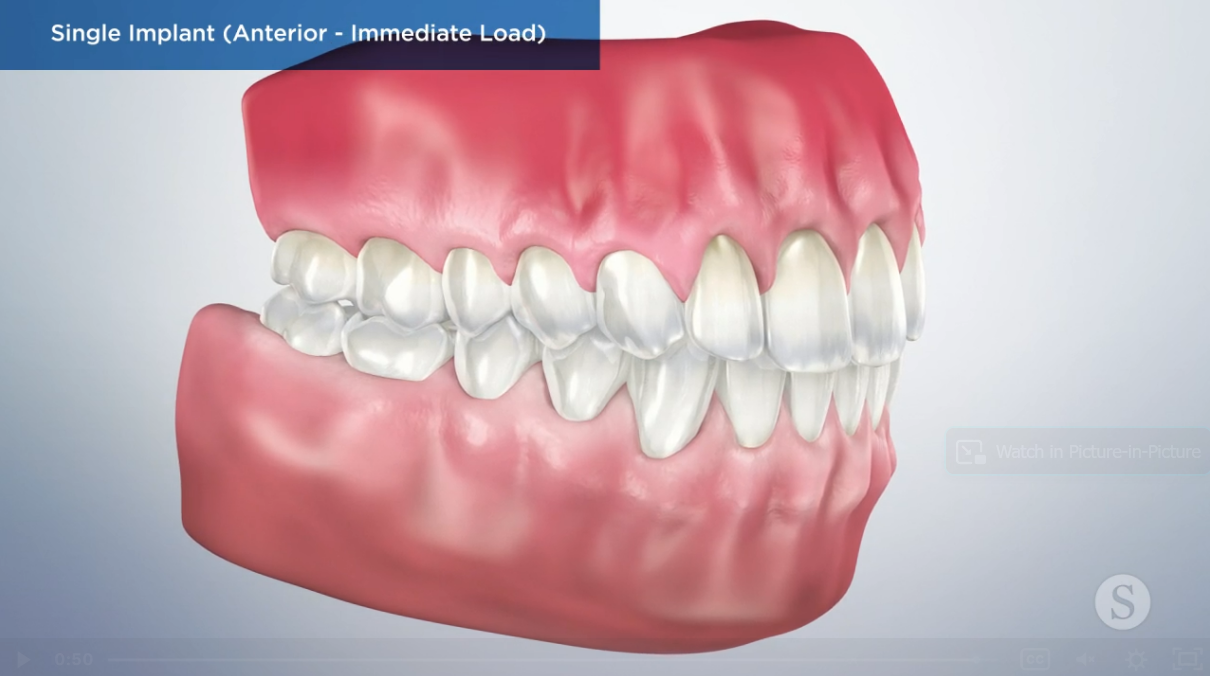
Disadvantages
Advantages
Requires at least three appointments over six months.
Permanent tooth replacement. Average life expectancy is approximately twenty years.
May involve additional procedures to augment bone for implant integration.
Protects the area from tissue and bone loss.
There is a chance that the implant may be rejected and need to be removed.
Prevents drifting of adjacent teeth and overeruption of opposing teeth.
A dental implant can be cared for like a natural tooth. You can floss between the teeth.
Does not require removal of healthy structure from adjacent teeth.
There is an option to have a temporary aesthetic replacement during the healing stage.
Retains 100% bite force.
Option 2: Placing a Three-Unit Bridge
For this option, we permanently replace the tooth by using teeth on either side for support.
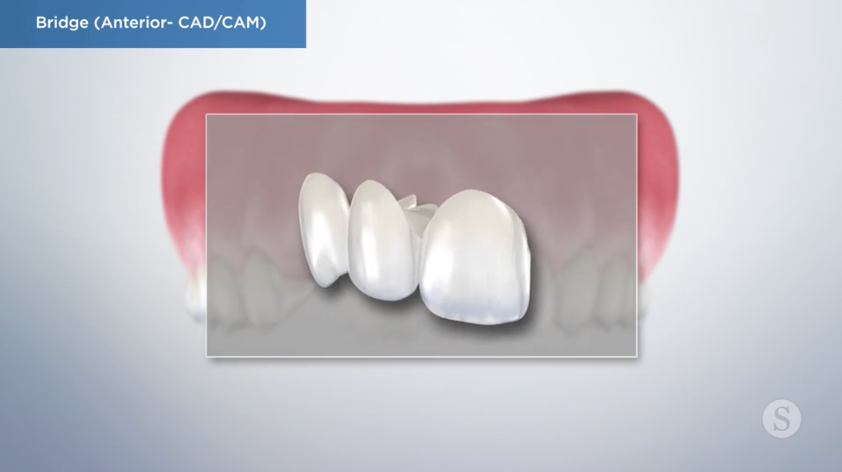
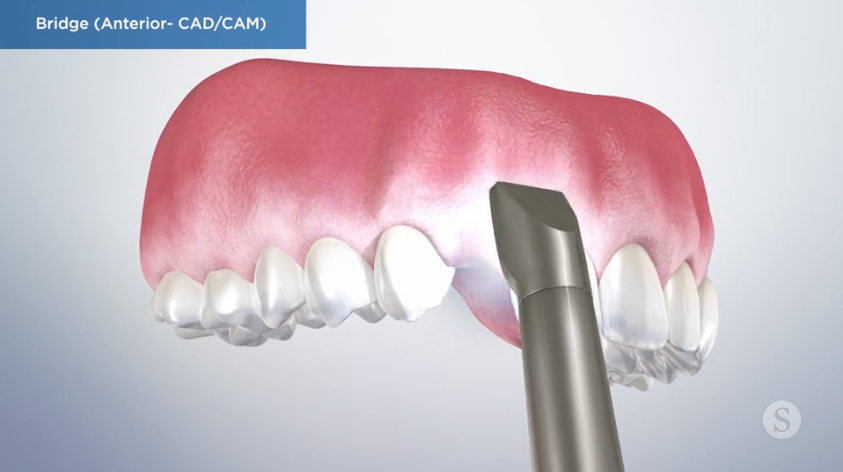
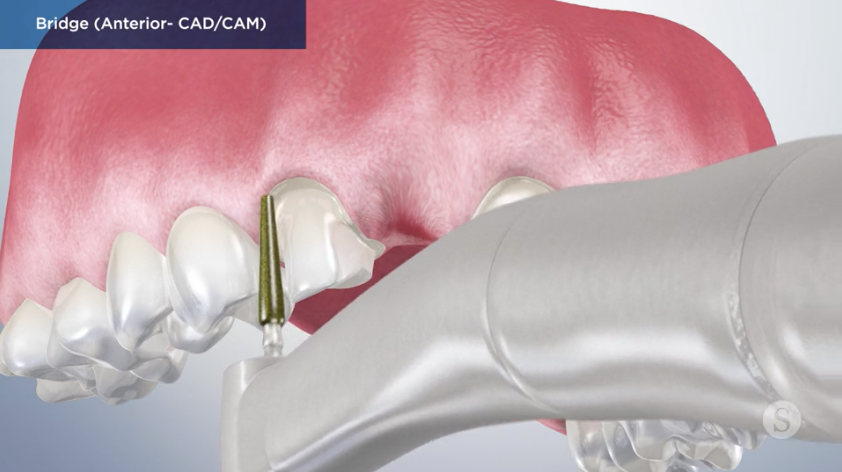
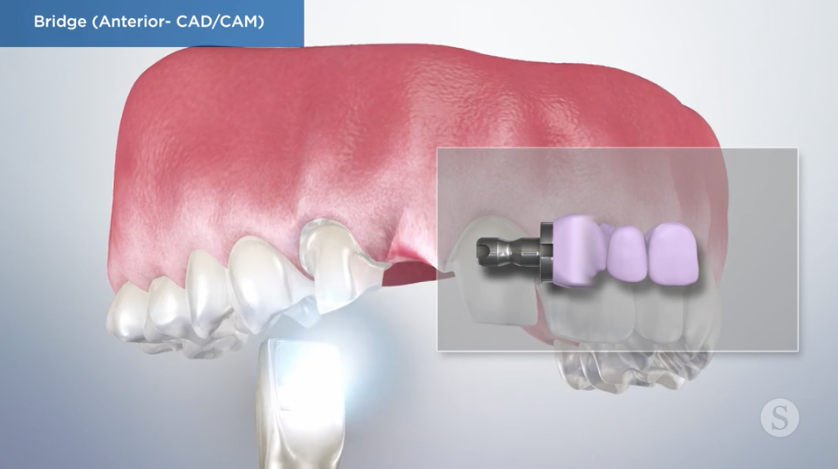
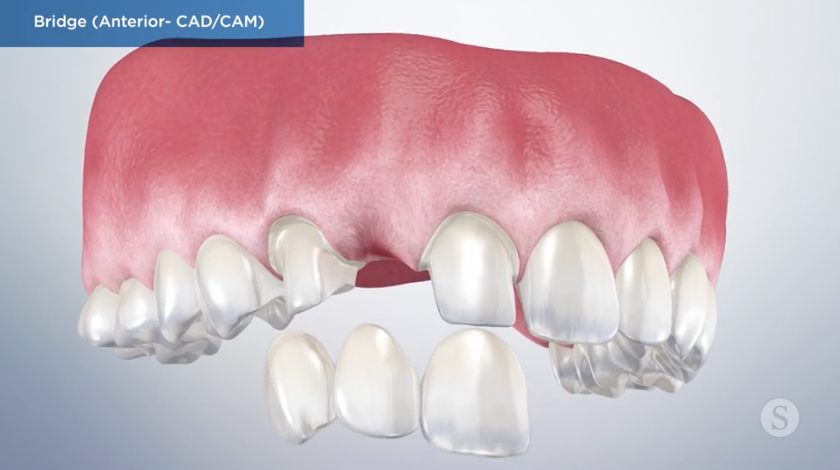
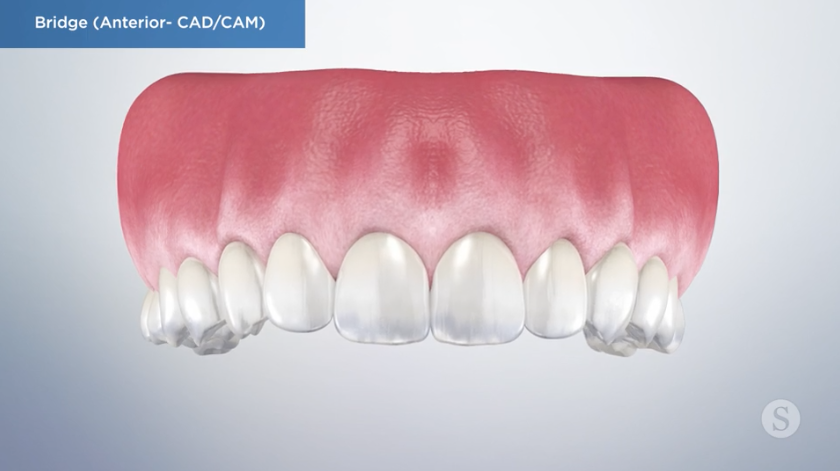
Advantages
Disadvantages
Requires multiple appointments to complete.
Permanent tooth replacement. The average life expectancy of a bridge is approximately ten years.
Turns a one-tooth problem into a three-tooth problem, since adjacent teeth need to be reduced.
Prevents drifting of adjacent teeth and overeruption of opposing teeth.
Increased risk of bone loss over time, since the bridge does not replace the missing root structure.
Can achieve excellent aesthetics.
A bridge requires frequent cleaning to prevent bacteria buildup. It can be difficult to floss between the three teeth or under the bridge.
Can generally be completed in two to three appointments, each two weeks apart.
Risk of cavities, root canal problems, or fractures in post teeth.
100% bite force.
Option 3: Crafting a Removable Partial Denture
There are two types of dentures. Acrylic dentures are made of hard plastic. Cast dentures are made with a metal base, with hard plastic built on it to mimic gums and teeth.
In this example, we are going to look at crafting a removable partial denture, since we are planning to replace a single tooth. If you are missing multiple teeth, other types of dentures are available.
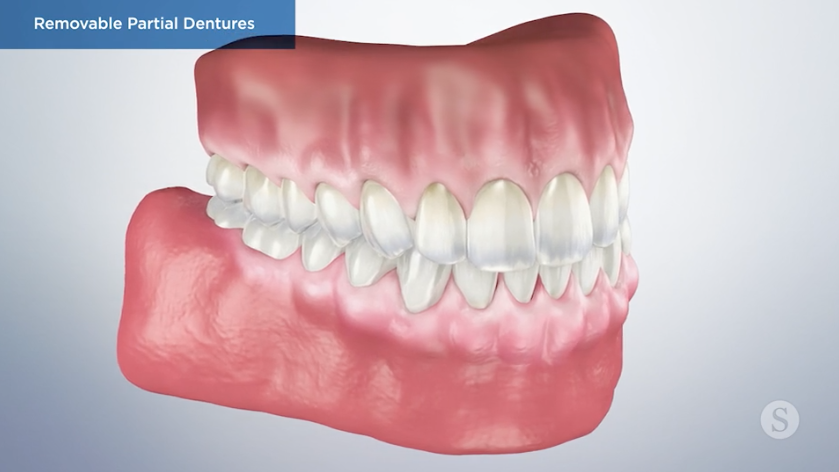

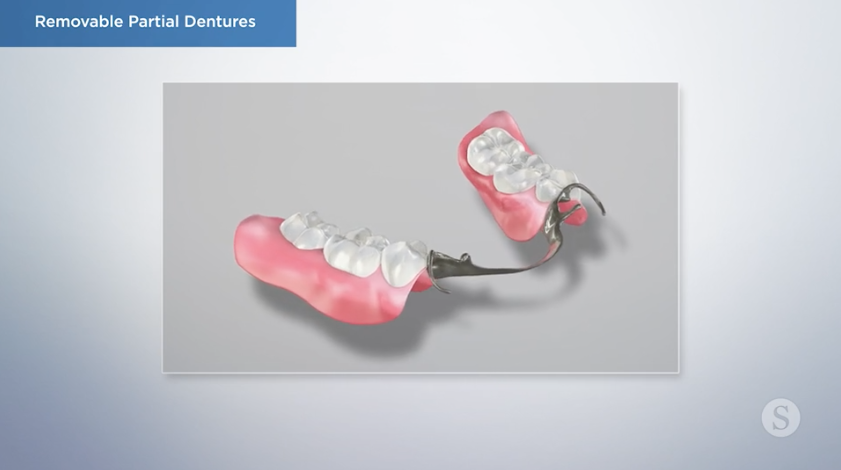
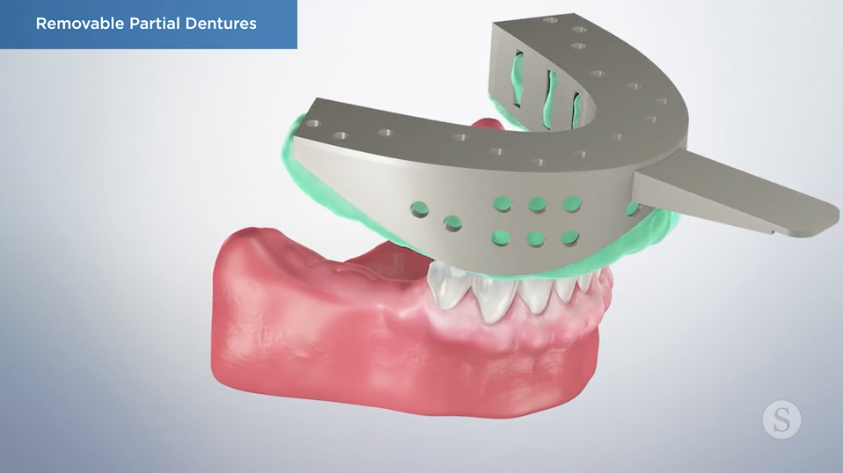
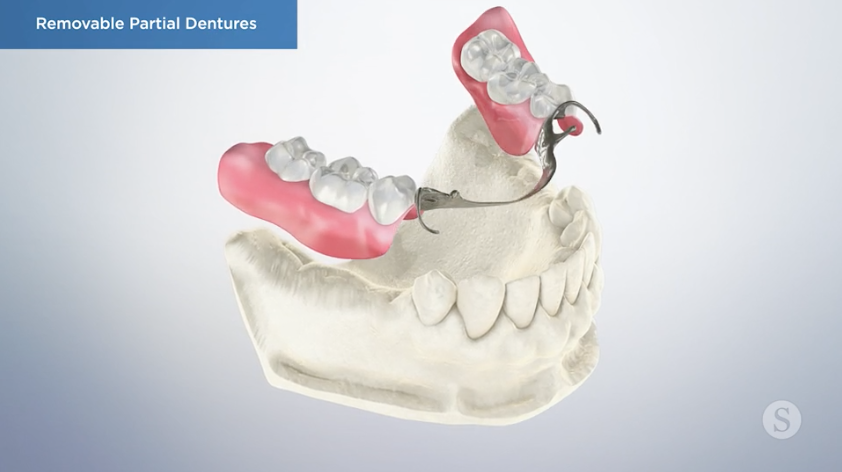
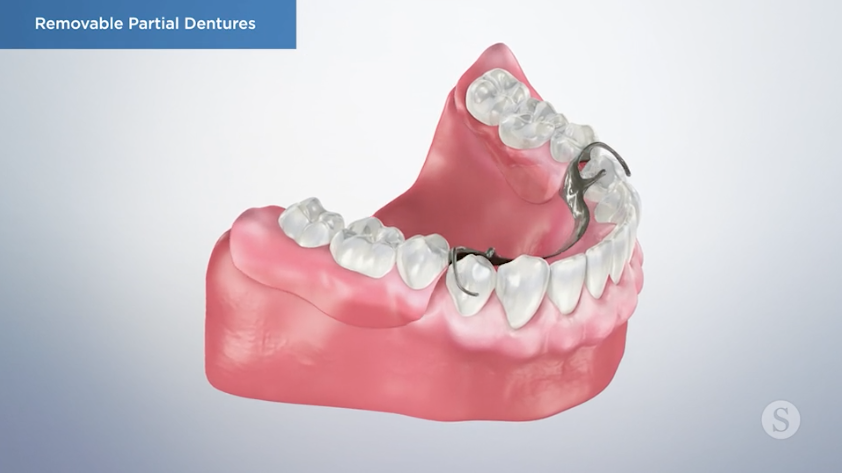
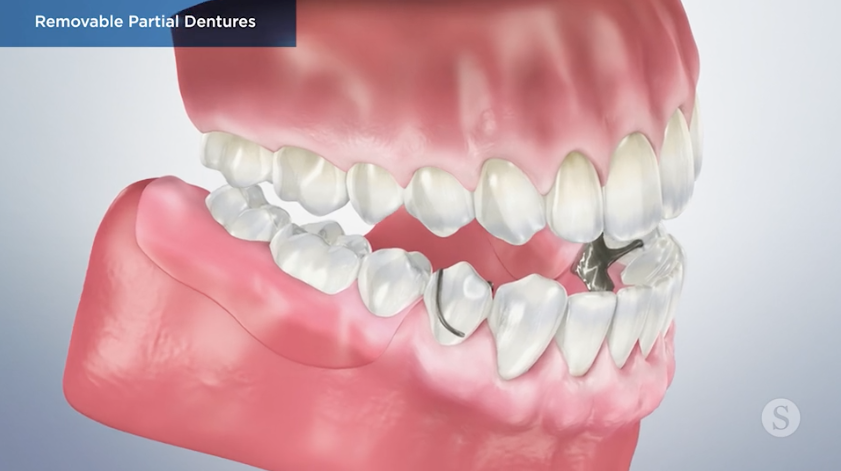
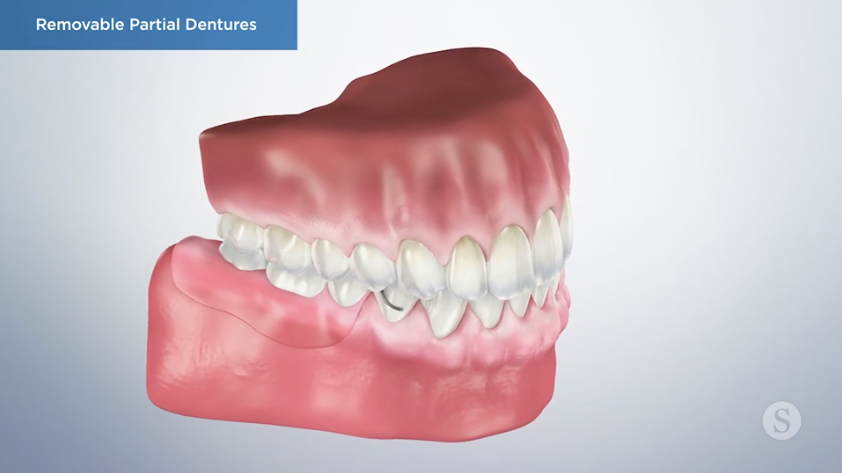
Advantages
Disadvantages
Needs to be relined as gum tissue shrinks.
Minimal damage to adjacent teeth.
Repair may be required if acrylic or wire breaks.
Acrylic (hard plastic) dentures can be fabricated in two appointments.
Requires time to get used to. Altered speech patterns initially. Some people have a tendency to gag.
Cast metal dentures can be fabricated in four to five appointments.
Food may get caught under the denture. Denture must be removed to clean.
Can be made without numbing.
Bone and gums shrink, since they no longer have a tooth to hold on to.
Prevents drifting of adjacent teeth and overeruption of opposing teeth.
Needs to be removed at night.
Dentures can sometimes be added to if other teeth need to be extracted in the future.
Loss of taste and sensation.
Clasps can loosen abutment teeth over time.
Not ideal for replacing only one single tooth, since it is unbalanced.
Retains 60% - 70% of your original bite force.

